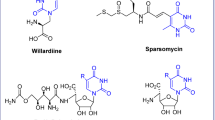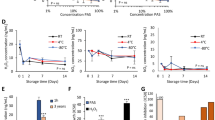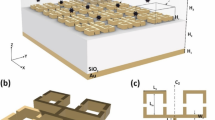Abstract
The urokinase-dependent activation of plasminogen by breast cancer cells plays an important role in metastasis. We have previously shown that the metastatic breast cancer cell line MDA-MB-231 over-expresses urokinase and binds and efficiently activates plasminogen at the cell surface compared to non-metastatic cells. The aim of this study was to further characterise plasminogen binding and determine the topology of cell surface-bound plasminogen in terms of its potential for activation. The lysine-dependent binding of plasminogen at 4°C to MDA-MB-231 cells was stable and resulted in an activation-susceptible conformation of plasminogen. Topologically, a fraction of bound plasminogen was co-localised with urokinase on the surfaces of MDA-MB-231 cells where it could be activated to plasmin. At 37°C plasmin was rapidly lost from the cell surface. Apart from actin, other candidate plasminogen receptors were either not expressed or did not co-localise with plasminogen at the cell surface. Thus, based on co-localisation with urokinase, plasminogen binding is partitioned into two functional pools on the surface of MDA-MB-231 cells. In conclusion, these results shed further light on the functional organisation of the plasminogen activation cascade on the surface of a metastatic cancer cell. © 2001 Cancer Research Campaign http://www.bjcancer.com
Similar content being viewed by others
Article PDF
Change history
16 November 2011
This paper was modified 12 months after initial publication to switch to Creative Commons licence terms, as noted at publication
References
Andronicos NM, Ranson M, Bognacki J and Baker MS (1997) The human ENO1 gene product (recombinant human α-enolase) displays characteristics required for a plasminogen binding protein. Biochim Biophys Acta 1337: 27–39
Andronicos NM, Baker MS, Lackmann M and Ranson M (2000) Deconvolution of the binding of plasminogen to its receptor α-enolase. Fibrinol Proteol 14: 327–336
Bastiaens PIH and Jovin TM (1996) Microspectroscopic tracks the intracellular processing of a signal transduction protein: Fluorescently-labeled protein kinase C β1. Proc Natl Acad Sci USA 93: 8407–8412
Christensen U and Molgaard L (1991) Stopped-flow kinetic studies of glu-plasminogen. Conformational changes triggered by AH-site ligand binding. FEBS Lett 278: 204–206
Cubellis MV, Nolli ML, Cassani G and Blasi F (1986) Binding of single-chain prourokinase to the urokinase receptor of human U937 cells. J Biol Chem 261: 15818–15822
Dano K, Romer J, Nielsen BS, Bjorn S, Pyke C, Rygaard J and Lund LR (1999) Cancer invasion and tissue remodeling-cooperation of protease systems and cell types. APMIS 107: 120–127
Dudani AK and Ganz PR (1996) Endothelial cell surface actin serves as a plasminogen binding site for plasminogen, tissue plasminogen activator and lipoprotein (a). Br J Haematol 95: 168–178
Duffy MJ, Maguire TM, McDermott EW and O’ Higgins N (1999) Urokinase plasminogen activator: a prognostic marker in multiple types of cancer. J Surg Oncol 71: 130–135
Ellis V, Whawell SA, Werner F and Deadman JJ (1999) Assembly of urokinase-receptor-mediated plasminogen activation complexes involves direct, non-active-site interactions between urokinase and plasminogen. Biochemistry 38: 651–659
Felez J (1998) Plasminogen binding to cell surfaces. Fibrinol Proteol 12: 183–189
Lind SE and Smith CJ (1993) Actin stimulates plasmin generation by tissue and urokinase-type plasminogen activators. Arch Biochem Biophys 307: 138–145
Markus G (1996) Conformational changes in plasminogen, their effect on activation and agents that modulate activation rates – a review. Fibrinolysis 10: 75–85
O’Mullane MJ and Baker MS (1998) Loss of cell viability dramatically elevates cell-surface plasminogen binding and activation. Expt Cell Res 242: 153–164
Ranson M, Andronicos NM, O’ Mullane MJ and Baker MS (1998) Increased plasminogen binding is associated with metastatic breast cancer cells: differential expression of plasminogen binding proteins. Br J Cancer 77: 1586–1597
Redlitz A, Tan AK, Eaton DL and Plow EF (1995a) Plasma carboxypeptidases as regulators of the plasminogen system. J Clin Invest 96: 2534–2538
Redlitz A, Fowler BJ, Plow EF and Miles LA (1995b) The role of an enolase-related molecule in plasminogen binding to cells. Eur J Biochem 227: 407–415
Schmitt M, Wilhelm OG, Reuning U, Kruger A, Harbeck N, Lengyel E, Graeff H, Gansbacher B, Kessler H, Burgle M, Sturzebecher J, Sperl S and Magdolen V (2000) The urokinase plasminogen activation system as a novel target for tumour therapy. Fibrinol & Proteol 14: 114–132
Stonelake PS, Jones CE, Neoptolemos JP and Baker PR (1997) Proteinase inhibitors reduce basement membrane degradation by human breast cancer cells. Br J Cancer 75: 951–959
Vassalli J-D, Baccino D and Berlin D (1985) A cellular binding site for the Mr 55,000 form of the human plasminogen activator, urokinase. J Cell Biol 100: 86–92
Author information
Authors and Affiliations
Rights and permissions
From twelve months after its original publication, this work is licensed under the Creative Commons Attribution-NonCommercial-Share Alike 3.0 Unported License. To view a copy of this license, visit http://creativecommons.org/licenses/by-nc-sa/3.0/
About this article
Cite this article
Andronicos, N., Ranson, M. The topology of plasminogen binding and activation on the surface of human breast cancer cells. Br J Cancer 85, 909–916 (2001). https://doi.org/10.1054/bjoc.2001.2022
Received:
Revised:
Accepted:
Published:
Issue date:
DOI: https://doi.org/10.1054/bjoc.2001.2022
Keywords
This article is cited by
-
MIEN1, a novel interactor of Annexin A2, promotes tumor cell migration by enhancing AnxA2 cell surface expression
Molecular Cancer (2015)
-
Improved Pharmacokinetic and Biodistribution Properties of the Selective Urokinase Inhibitor PAI-2 (SerpinB2) by Site-Specific PEGylation: Implications for Drug Delivery
Pharmaceutical Research (2015)
-
Plasminogen binding and activation at the breast cancer cell surface: the integral role of urokinase activity
Breast Cancer Research (2007)
-
Plasminogen and angiostatin interact with heat shock proteins
Molecular and Cellular Biochemistry (2007)



